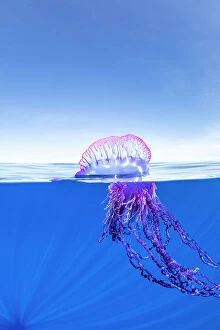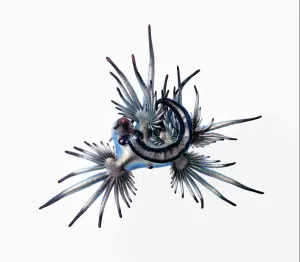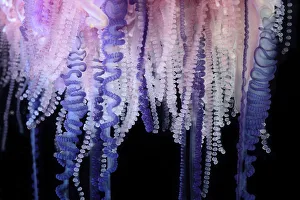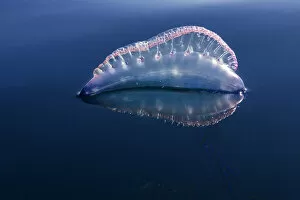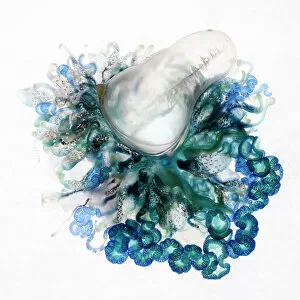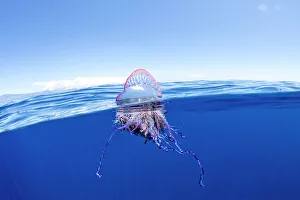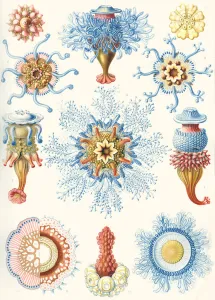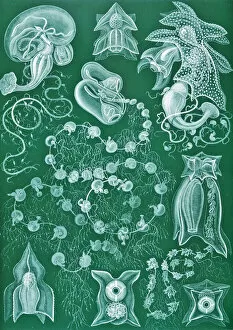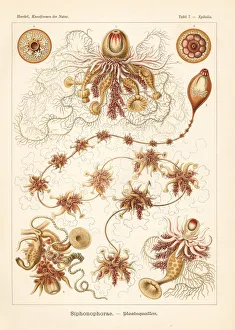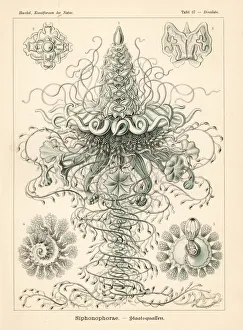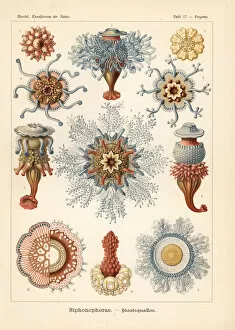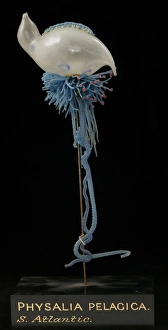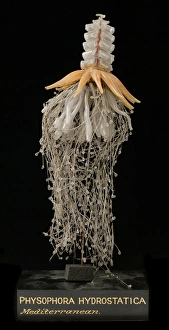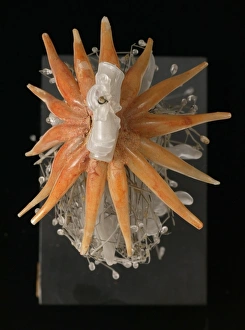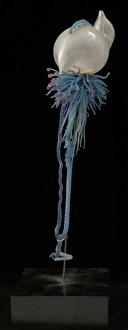"Siphonophorae: Fascinating Creatures of the Ocean" The Portuguese man o war (Physalia physalis) is a mesmerizing and deadly creature found in the waters surrounding Tenerife, Canary Islands. With its vibrant colors and long tentacles, it commands attention while floating on the sea surface. However, lurking within these deadly appendages is an unexpected resident - the Man-of-war fish (Nomeus gronovi). This unique fish has developed a remarkable resistance to the toxin of Physalia physalis, making it ten times more resistant than other fish in its vicinity. Venturing further into the Caribbean Sea, we encounter another intriguing species that predates upon Portuguese man o wars - the Blue sea slug (Glaucus atlanticus). These slugs were washed ashore during a mass stranding event involving thousands of Indo-Pacific Portuguese man-of-war (Physalia utriculus). Astonishingly, Glaucus atlanticus not only survives but thrives by consuming these venomous creatures due to their immunity against their potent venom. Moving towards Bermuda's Sargasso Sea, we witness a captivating close-up view of Physalia pelagica's tentacles. The intricate design and vibrant hues highlight nature's artistry at its finest. Similarly enchanting are Nanomia sp's nectophores and palpons found in Gulf of Maine. These delicate structures showcase both beauty and functionality as they aid in locomotion for this particular siphonophore species. In South Africa's Atlantic Ocean lies evidence of yet another extraordinary phenomenon - a massive stranding event involving thousands of Indo-Pacific Portuguese Man-of-War (Physalia utriculus). A top-down view reveals countless individuals floating together as if forming an oceanic tapestry. Such occurrences provide scientists with valuable insights into these enigmatic creatures' behavior and distribution patterns. As we journey through various oceans around the world, from Azores to the Atlantic, we encounter these captivating creatures time and again.


